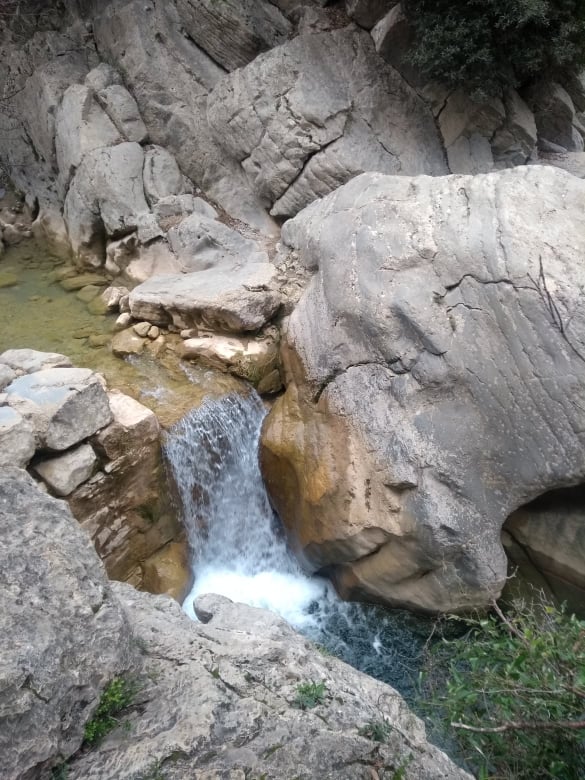The Area
The Alta Garrotxa, Catalunya
The Area
Rock faces, biodiversity & wild rivers
The Alta Garrotxa is without doubt the most important area in the eastern pre-Pyrenees because of its diversity and exceptional surroundings.
The Alta Garrotxa
The most important area in the Easter Pre-Pyrenees
Its extremely abrupt relief has shaped the landscape, vegetation, fauna and human settlements throughout history and has allowed the continuation of a relatively isolated natural space that preserves an important biological richness. So much so, that it has been declared a Space of Natural Interest and has been designated as a Zone of Special Protection for Birds in the Nature Network 2000. At present, the Alta Garrotxa Consortium manages this space.
The relief of the Alta Garrotxa, marked by deep valleys enclosed by long cliffs and walls of rock, is what gives the area its name: les garrotxes are “rough lands of bad tracks”. The landscape of the Alta Garrotxa is truly spectacular, not just for the magnificence of its topography but also for it forestry, dominated by holm and common oaks.
Surrounding Area
This extensive territory is richly endowed with regard to its cultural heritage: archaeological sites, farmhouses, hamlets, hermitages, charcoal-making sites…
La Punyalada (The Stab), one of Marià Vayreda’s best-known novels, was set in the Alta Garrotxa. It is a story of blood and fire, passion and love, and is centred on the soil and country. A love triangle is used in the narration of the story to tell the reader about good and evil. La Punyalada is a text that addresses complex human relationships and strong passions.
Visit the Alta Garrotxa Tourism Site
Forest Walks & Hiking Trails:
Itineraris
The climate:

Nearby Towns
Besalu:
Besalú, the most interesting Spanish village you’ve never heard of Besalu is a wonderful medieval town, considered to be one of the most beautiful towns in Spain.
Cabanes d’Argelaguer:
Visit Cabanes d’Argelaguer Tourism Site
Figueres & Dali Museum:
The Dalí Theatre and Museum is a museum dedicated to the artist Salvador Dalí in his home town of Figueres, in Catalonia, Spain. Salvador Dalí is buried in a crypt below the stage.
Cadaques & Cap de Creus:
The Cap de Creus (Creus Cape) is one of the most amazing places on the Costa Brava.Cap de Creus Natural Park contains a collection of beauty spots that will leave a lasting imprint on your memory. You won’t forget the views of the wild coastline with its vertiginous cliffs and hidden coves, and with islets scattered all along it. Neither will you forget the capriciously shaped rocks, sculpted by the wind and the erosion of the sea; with a little imagination you’ll be seeing lions, dragons, camels, eagles and other figures. A true biological paradise!
Rupit & Salto de Sallent:
Rupit is a charming mediaeval town dramatically nestled in a spectacular natural environment within the municipality of Rupit i Pruit.Salt de Sallent is one of the more impressive waterfalls in Spain and is located near Rupit in the region Catalonia with a spectacular 110m drop down a stunning cliff.
Beget:
The village of Beget, considered Catalonia’s més bufó (cutest), was completely cut off from motorized vehicles until the mid-1960s, when a pista forestal (jeep track) was laid down. In 1980, Beget was finally fully connected to the rest of the world by an asphalt roadway, which can be hazardous when mist descends, as it often does.
Castellfolit de la Roca:
Castellfollit de la Roca is one of the most picturesque villages in the autonomous community of Catalonia, in Spain.The village is situated on a narrow strip of basalt rock, barely two houses wide at places, that rises to a height of 50 meters and stretches for a kilometer.
And much more… Sadernes Waterfalls, Pyrenees villages, Volcanos around Olot, Caves,etc.
